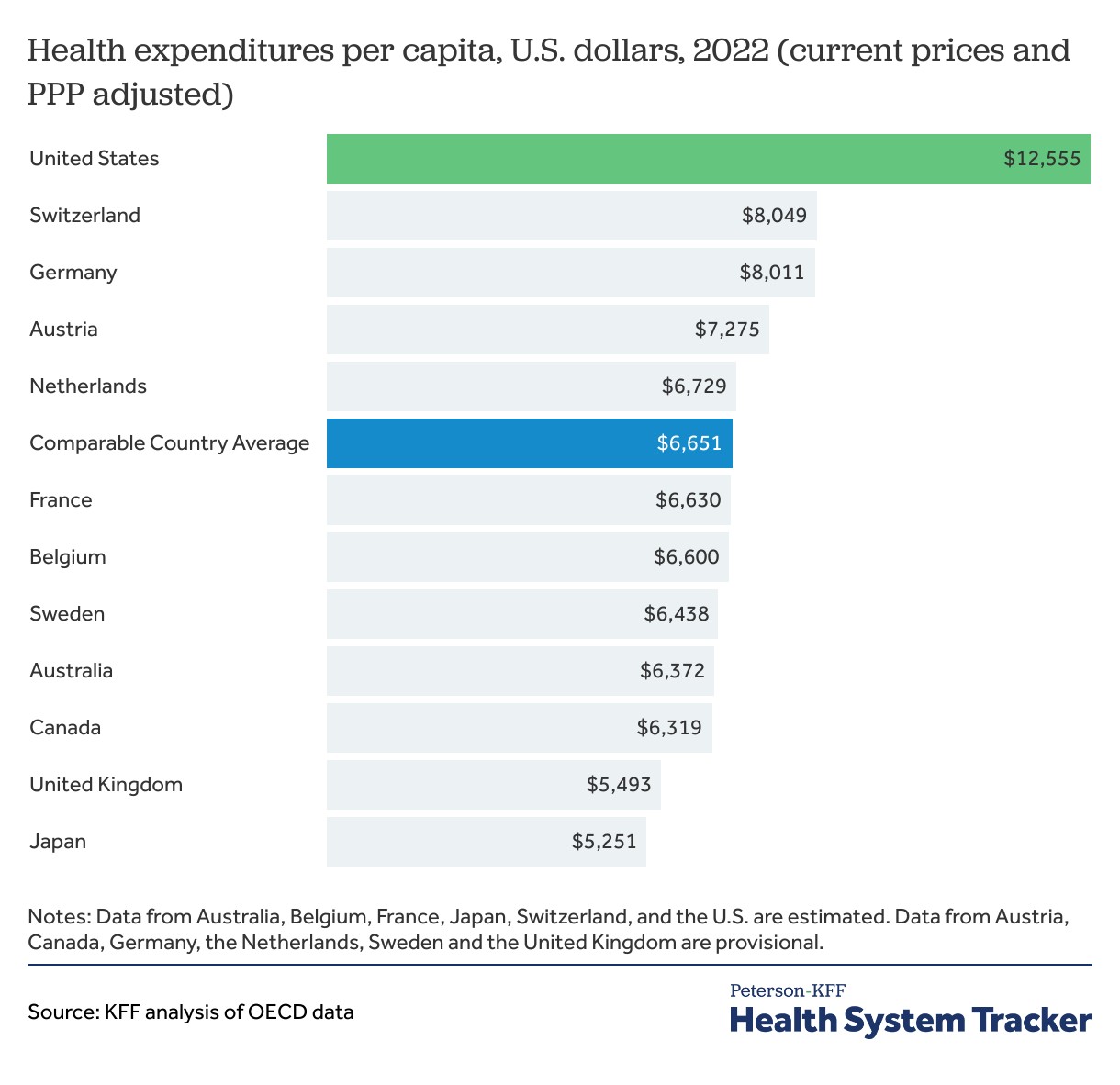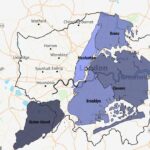COMPARE.EDU.VN provides an in-depth look into whether Australia is more costly than the United States, considering factors like cost of living, healthcare, and education to help you make informed decisions. This comparison examines the financial implications of living in both countries, offering insights into lifestyle affordability, economic factors, and comparative expenses. Explore how COMPARE.EDU.VN simplifies your decision-making process through detailed comparisons.
1. Introduction: Australia vs. America – An Overview of Living Costs
Choosing between Australia and America involves significant consideration of various lifestyle and financial factors. Both countries offer unique opportunities and challenges, making it crucial to understand the comparative costs. This article aims to provide a comprehensive analysis of the key cost factors, helping you to determine which country aligns better with your financial expectations and lifestyle preferences. Let’s dive into a detailed comparison of living expenses, economic considerations, and lifestyle affordability.
2. Cost of Living: A Detailed Breakdown
2.1. Housing Costs: Renting and Buying
Housing represents a substantial portion of living expenses in both Australia and America. However, the costs can vary significantly based on location, property type, and other factors.
2.1.1. Australia
In Australia, major cities like Sydney and Melbourne are notorious for high housing costs. Renting a one-bedroom apartment in Sydney’s city center can range from AUD 2,500 to AUD 3,500 per month (approximately USD 1,650 to USD 2,300). Buying a property in these areas can cost upwards of AUD 1,000,000 (approximately USD 660,000).
Outside of the major cities, housing costs are generally more affordable. For example, in Adelaide or Perth, the rental costs for a one-bedroom apartment may be closer to AUD 1,500 to AUD 2,200 per month (approximately USD 990 to USD 1,450), and property prices can start around AUD 500,000 (approximately USD 330,000).
2.1.2. America
America’s housing market is similarly diverse. In expensive cities like New York and San Francisco, renting a one-bedroom apartment can cost between USD 3,000 to USD 4,500 per month. Property prices in these areas can easily exceed USD 1,000,000.
In more affordable regions, such as the Midwest or the South, rental costs can be significantly lower, ranging from USD 800 to USD 1,500 per month. Property prices in these areas may start from USD 200,000 to USD 400,000.
2.1.3. Comparison Table: Housing Costs
| Category | Australia (Sydney/Melbourne) | Australia (Adelaide/Perth) | America (NYC/San Francisco) | America (Midwest/South) |
|---|---|---|---|---|
| Rent (1-Bedroom Apt) | USD 1,650 – USD 2,300 | USD 990 – USD 1,450 | USD 3,000 – USD 4,500 | USD 800 – USD 1,500 |
| Property Price | USD 660,000+ | USD 330,000+ | USD 1,000,000+ | USD 200,000 – USD 400,000 |


2.2. Food and Groceries: Daily Expenses
The cost of food and groceries is another essential consideration when comparing living expenses.
2.2.1. Australia
Australia generally has higher food costs due to its geographical isolation and higher import costs. A typical weekly grocery bill for a single person can range from AUD 80 to AUD 150 (approximately USD 53 to USD 99). Dining out can also be expensive, with a meal at a mid-range restaurant costing around AUD 30 to AUD 50 per person (approximately USD 20 to USD 33).
2.2.2. America
In America, food costs can vary widely depending on the region and your shopping habits. A single person’s weekly grocery bill may range from USD 50 to USD 100. Dining out is generally more affordable than in Australia, with a mid-range restaurant meal costing around USD 20 to USD 40 per person.
2.2.3. Comparison Table: Food and Groceries
| Category | Australia | America |
|---|---|---|
| Weekly Groceries | USD 53 – USD 99 | USD 50 – USD 100 |
| Mid-Range Meal Out | USD 20 – USD 33 | USD 20 – USD 40 |
2.3. Transportation: Getting Around
Transportation costs include public transport, car ownership, and fuel prices, all of which can impact your budget.
2.3.1. Australia
Australia’s public transport systems are generally well-developed in major cities, but they can be expensive. A monthly public transport pass in Sydney or Melbourne can cost around AUD 150 to AUD 200 (approximately USD 99 to USD 132). Car ownership costs, including fuel, insurance, and maintenance, are also relatively high. Fuel prices can range from AUD 1.70 to AUD 2.00 per liter (approximately USD 1.12 to USD 1.32 per liter).
2.3.2. America
In America, public transport options vary significantly by city. New York City has an extensive and relatively affordable public transport system, with a monthly pass costing around USD 127. However, in many other cities, car ownership is more common. Fuel prices are generally lower than in Australia, ranging from USD 0.70 to USD 0.90 per liter.
2.3.3. Comparison Table: Transportation Costs
| Category | Australia | America |
|---|---|---|
| Monthly Public Transport Pass | USD 99 – USD 132 | USD 127 (NYC) |
| Fuel Price (Per Liter) | USD 1.12 – USD 1.32 | USD 0.70 – USD 0.90 |
2.4. Healthcare Costs: Understanding the Systems
Healthcare is a critical consideration, with both countries offering different systems.
2.4.1. Australia
Australia has a universal healthcare system called Medicare, which provides free or subsidized healthcare services to citizens and permanent residents. However, many Australians also opt for private health insurance to cover additional services and reduce waiting times. The cost of private health insurance can range from AUD 100 to AUD 300 per month (approximately USD 66 to USD 198), depending on the level of coverage.
2.4.2. America
America’s healthcare system is primarily private, with many people obtaining health insurance through their employer. However, the Affordable Care Act (ACA) has expanded access to health insurance. The cost of health insurance can vary significantly depending on the plan and coverage, but it can range from USD 300 to USD 800 per month.
2.4.3. Comparison Table: Healthcare Costs
| Category | Australia | America |
|---|---|---|
| Health Insurance | USD 66 – USD 198 (Private) | USD 300 – USD 800 (Private) |
| Universal Healthcare | Medicare | Limited Public Options |
2.5. Education Costs: Investing in the Future
Education costs vary widely based on the level of education and the institution.
2.5.1. Australia
Australian universities charge tuition fees to both domestic and international students. For domestic students, the government subsidizes tuition fees, but students still incur a debt. For international students, tuition fees can range from AUD 30,000 to AUD 45,000 per year (approximately USD 19,800 to USD 29,700).
2.5.2. America
American universities also charge tuition fees, which can be very high, especially at private institutions. Tuition fees can range from USD 10,000 to USD 60,000 per year, depending on the university and the program.
2.5.3. Comparison Table: Education Costs
| Category | Australia | America |
|---|---|---|
| Annual Tuition | USD 19,800 – USD 29,700 (International) | USD 10,000 – USD 60,000 |
2.6. Utilities and Internet: Essential Services
Utilities such as electricity, gas, and water, along with internet services, are essential for modern living.
2.6.1. Australia
In Australia, the cost of utilities can be relatively high due to the country’s vast distances and infrastructure challenges. A monthly utility bill for a small apartment can range from AUD 150 to AUD 300 (approximately USD 99 to USD 198). Internet services can cost around AUD 70 to AUD 100 per month (approximately USD 46 to USD 66).
2.6.2. America
In America, utility costs vary by region, with some states having lower energy prices than others. A monthly utility bill for a small apartment can range from USD 100 to USD 250. Internet services can cost around USD 50 to USD 80 per month.
2.6.3. Comparison Table: Utilities and Internet
| Category | Australia | America |
|---|---|---|
| Monthly Utilities | USD 99 – USD 198 | USD 100 – USD 250 |
| Monthly Internet | USD 46 – USD 66 | USD 50 – USD 80 |
2.7. Entertainment and Leisure: Quality of Life
Entertainment and leisure activities are important for maintaining a good quality of life.
2.7.1. Australia
Australia offers a wide range of entertainment options, from outdoor activities to cultural events. However, these activities can be relatively expensive. A movie ticket can cost around AUD 20 (approximately USD 13), and a concert ticket can range from AUD 80 to AUD 200 (approximately USD 53 to USD 132).
2.7.2. America
America also offers diverse entertainment options, and the costs can vary by location. A movie ticket can cost around USD 12, and a concert ticket can range from USD 50 to USD 150.
2.7.3. Comparison Table: Entertainment and Leisure
| Category | Australia | America |
|---|---|---|
| Movie Ticket | USD 13 | USD 12 |
| Concert Ticket | USD 53 – USD 132 | USD 50 – USD 150 |
3. Salary and Income: Earning Potential
3.1. Average Salaries in Australia
Australia boasts a strong economy with competitive salaries across various industries. The average annual salary in Australia is around AUD 90,000 (approximately USD 59,400). However, this can vary significantly based on the profession, experience level, and location.
3.1.1. High-Demand Industries
Certain industries in Australia offer higher salaries due to high demand and skill shortages. These include:
- Healthcare: Medical professionals such as doctors, nurses, and specialists often command high salaries.
- Technology: IT professionals, software engineers, and data scientists are in high demand and can earn substantial incomes.
- Engineering: Civil, mechanical, and electrical engineers are highly sought after, particularly in the mining and infrastructure sectors.
- Finance: Financial analysts, accountants, and investment bankers can earn competitive salaries, especially in major financial hubs like Sydney and Melbourne.
3.1.2. Salary Ranges by Profession
| Profession | Average Annual Salary (AUD) | Average Annual Salary (USD) |
|---|---|---|
| Doctor | 200,000 – 400,000 | 132,000 – 264,000 |
| Software Engineer | 100,000 – 150,000 | 66,000 – 99,000 |
| Civil Engineer | 80,000 – 130,000 | 52,800 – 85,800 |
| Financial Analyst | 70,000 – 120,000 | 46,200 – 79,200 |
3.2. Average Salaries in America
The United States, as one of the world’s largest economies, offers diverse job opportunities and competitive salaries. The median annual wage in the U.S. was USD 54,132 in May 2023, according to the Bureau of Labor Statistics. However, like Australia, salaries vary greatly depending on the industry, location, and level of experience.
3.2.1. High-Demand Industries
Similar to Australia, several industries in America offer higher-than-average salaries due to strong demand and specialized skills. These include:
- Technology: Silicon Valley and other tech hubs offer lucrative opportunities for software developers, data scientists, and IT managers.
- Healthcare: The healthcare sector continues to grow, with high demand for doctors, surgeons, nurses, and healthcare administrators.
- Finance: Wall Street and other financial centers provide high-paying jobs for financial analysts, investment bankers, and portfolio managers.
- Engineering: Aerospace, mechanical, and electrical engineers are in demand, particularly in sectors like defense, manufacturing, and technology.
3.2.2. Salary Ranges by Profession
| Profession | Median Annual Salary (USD) |
|---|---|
| Doctor | 208,000+ |
| Software Engineer | 110,140 |
| Civil Engineer | 88,050 |
| Financial Analyst | 85,660 |
3.3. Comparison Table: Salary Ranges
| Profession | Australia (USD) | America (USD) |
|---|---|---|
| Doctor | 132,000 – 264,000 | 208,000+ |
| Software Engineer | 66,000 – 99,000 | 110,140 |
| Civil Engineer | 52,800 – 85,800 | 88,050 |
| Financial Analyst | 46,200 – 79,200 | 85,660 |
3.4. Income Tax Systems
Understanding the income tax systems in both countries is crucial for assessing your net income and financial well-being.
3.4.1. Australia’s Income Tax System
Australia has a progressive income tax system, where higher income earners pay a larger percentage of their income in taxes. The tax rates for the 2023-2024 income year are as follows:
| Taxable Income | Tax Rate |
|---|---|
| $0 – $18,200 | 0% |
| $18,201 – $45,000 | 19% |
| $45,001 – $120,000 | 32.5% |
| $120,001 – $180,000 | 37% |
| $180,001 and over | 45% |
In addition to income tax, Australia also has a 2% Medicare levy for most taxpayers.
3.4.2. America’s Income Tax System
The United States also employs a progressive income tax system at the federal level. As of 2023, the federal income tax rates are:
| Taxable Income (Single) | Tax Rate |
|---|---|
| $0 – $11,000 | 10% |
| $11,001 – $44,725 | 12% |
| $44,726 – $95,375 | 22% |
| $95,376 – $182,100 | 24% |
| $182,101 – $231,250 | 32% |
| $231,251 – $578,125 | 35% |
| $578,126 and over | 37% |
In addition to federal income tax, many states also have their own income taxes, which can vary significantly.
3.4.3. Comparison Table: Income Tax Systems
| Feature | Australia | America |
|---|---|---|
| Tax System | Progressive | Progressive |
| Highest Tax Rate | 45% (on income over $180,001 AUD) | 37% (on income over $578,126 USD) |
| Additional Levies | 2% Medicare levy | State income taxes vary |
4. Lifestyle and Quality of Life
4.1. Climate and Environment
4.1.1. Australia
Australia is known for its diverse climate, ranging from tropical in the north to temperate in the south. It offers a wide array of outdoor activities, including surfing, hiking, and exploring the Outback. The country boasts unique wildlife and stunning natural landscapes, such as the Great Barrier Reef and the Blue Mountains.
4.1.2. America
The United States also has a highly diverse climate, with distinct regions offering different weather patterns and landscapes. From the snowy mountains of the Rockies to the sunny beaches of California and the vibrant forests of New England, America provides a wide range of environmental experiences.
4.2. Culture and Entertainment
4.2.1. Australia
Australian culture is laid-back and outdoorsy, with a strong emphasis on sports and recreation. Major cities like Sydney and Melbourne offer a vibrant arts scene, with numerous theaters, galleries, and music venues. The country also has a rich Indigenous culture, adding to its unique cultural tapestry.
4.2.2. America
The United States is a melting pot of cultures, with influences from around the world. It offers a vast array of entertainment options, from Broadway shows in New York to Hollywood blockbusters in Los Angeles. America is also known for its diverse music scene, with genres ranging from jazz and blues to country and hip-hop.
4.3. Safety and Security
4.3.1. Australia
Australia is generally considered a safe country with low crime rates. However, like any country, it has its share of crime, particularly in urban areas.
4.3.2. America
The United States has varying levels of safety and security depending on the location. While some cities and towns have very low crime rates, others struggle with higher levels of violence and property crime.
4.4. Social Life and Community
4.4.1. Australia
Australians are known for their friendly and welcoming nature, making it relatively easy for newcomers to integrate into the community. The country has a strong sense of community, with numerous local events and social clubs.
4.4.2. America
The United States is a highly diverse society, with communities ranging from tight-knit small towns to bustling urban neighborhoods. Social life in America can vary greatly depending on the region and the people you connect with.
5. Economic Factors
5.1. Job Market
5.1.1. Australia
Australia’s job market is relatively strong, with low unemployment rates and a growing economy. Key industries include mining, agriculture, tourism, and financial services.
5.1.2. America
The United States has a large and diverse job market, with opportunities across various sectors. Key industries include technology, healthcare, finance, and manufacturing.
5.2. Economic Stability
5.2.1. Australia
Australia has a stable economy with a history of consistent growth. It is considered a safe haven for investors due to its strong financial institutions and sound economic policies.
5.2.2. America
The United States is the world’s largest economy, but it is also subject to economic fluctuations and global market trends. However, it remains a global economic powerhouse with significant influence.
5.3. Currency Strength
5.3.1. Australian Dollar (AUD)
The Australian dollar is a commodity currency, meaning its value is closely tied to the prices of commodities such as iron ore and coal. It can be volatile due to global market conditions.
5.3.2. United States Dollar (USD)
The United States dollar is the world’s reserve currency, and it is generally considered a safe and stable currency. Its value is influenced by factors such as interest rates, inflation, and economic growth.
5.4. Inflation Rate
5.4.1. Australia
Australia’s inflation rate has been relatively stable in recent years, but it can be affected by factors such as global commodity prices and domestic demand.
5.4.2. America
The United States has also experienced relatively stable inflation rates in recent years, but it is subject to fluctuations due to factors such as monetary policy and global economic conditions.
6. Visa and Immigration
6.1. Australian Visa Options
Australia offers various visa options for those looking to live and work in the country, including skilled migration visas, employer-sponsored visas, and family visas.
6.2. American Visa Options
The United States also has a range of visa options, including employment-based visas, family-based visas, and student visas.
6.3. Immigration Policies
6.3.1. Australia
Australia’s immigration policies are generally selective, prioritizing skilled migrants who can contribute to the economy.
6.3.2. America
The United States has a complex immigration system, with policies that are subject to political and economic factors.
7. Making the Decision
7.1. Consider Your Priorities
When deciding between Australia and America, it’s important to consider your priorities, such as career opportunities, lifestyle preferences, and financial goals.
7.2. Research Specific Locations
Both countries offer diverse regions with varying costs of living and lifestyles. Research specific cities and towns to find the best fit for your needs.
7.3. Seek Professional Advice
Consider seeking advice from financial advisors, immigration lawyers, and other professionals to help you make an informed decision.
8. Expert Insights on COMPARE.EDU.VN
8.1. Detailed Comparison Tools
COMPARE.EDU.VN provides comprehensive tools to compare various aspects of living in Australia and America, offering data-driven insights to aid your decision-making process.
8.2. User Reviews and Experiences
Read firsthand accounts from individuals who have lived in both countries. These reviews offer valuable perspectives on the day-to-day realities of life in Australia and America.
8.3. Expert Analyses
Benefit from expert analyses on COMPARE.EDU.VN, providing detailed insights into the economic, social, and lifestyle factors that influence your decision.
9. Case Studies
9.1. Case Study 1: Healthcare Professional
A healthcare professional considering a move might find America offers higher earning potential, but Australia provides a more affordable and accessible healthcare system.
9.2. Case Study 2: Tech Entrepreneur
A tech entrepreneur might be drawn to Silicon Valley in America for its innovation and venture capital opportunities, but could also find a thriving tech scene in Australian cities like Sydney.
9.3. Case Study 3: Family with Young Children
A family with young children might prioritize safety, education, and community, factors where both countries have strong offerings but with different cost implications.
10. Frequently Asked Questions (FAQs)
10.1. Is healthcare cheaper in Australia or America?
Australia’s universal healthcare system generally makes healthcare more affordable compared to America’s primarily private system.
10.2. Which country has a higher average salary, Australia or America?
While specific professions can vary, America tends to offer higher average salaries in certain sectors like technology and finance.
10.3. Is the cost of living higher in Sydney or New York City?
Generally, New York City has a higher cost of living than Sydney, particularly when it comes to housing.
10.4. Which country has better job opportunities for engineers?
Both countries have strong job markets for engineers, but the specific opportunities may vary depending on the specialization and industry.
10.5. How does the tax system differ between Australia and America?
Both countries have progressive tax systems, but the specific tax rates and brackets vary. Additionally, America has state income taxes, while Australia has a Medicare levy.
10.6. Which country is safer, Australia or America?
Australia is generally considered safer with lower crime rates compared to certain areas in America.
10.7. How do education costs compare in Australia and America?
Education costs can be high in both countries, but American universities can be significantly more expensive, especially private institutions.
10.8. Which country has a more diverse culture?
America is often considered a melting pot of cultures, but Australia also has a rich and diverse cultural landscape.
10.9. Is it easier to get a visa for Australia or America?
The ease of obtaining a visa can vary depending on individual circumstances and the specific visa type. Both countries have complex immigration systems.
10.10. How does the climate differ between Australia and America?
Both countries have diverse climates, with Australia ranging from tropical to temperate, and America offering everything from snowy mountains to sunny beaches.
11. Conclusion: Making an Informed Choice
Choosing between Australia and America depends on your individual circumstances, priorities, and financial considerations. Both countries offer unique opportunities and challenges, so it’s important to weigh the pros and cons carefully. Whether it’s the cost of living, career prospects, or lifestyle preferences, understanding these factors will help you make an informed decision.
For further detailed comparisons and personalized insights, visit COMPARE.EDU.VN. Make the best choice for your future by exploring the comprehensive resources available at COMPARE.EDU.VN.
Navigating the complexities of relocation requires detailed and reliable information. At COMPARE.EDU.VN, we understand the challenges in comparing living costs and lifestyle factors between different countries. That’s why we offer in-depth comparisons, expert analyses, and user reviews to help you make an informed decision.
Ready to explore your options? Visit compare.edu.vn today and discover the resources you need to confidently choose the best place to live. Contact us at 333 Comparison Plaza, Choice City, CA 90210, United States, or reach out via WhatsApp at +1 (626) 555-9090. Your journey to a better life starts with a smart comparison.

